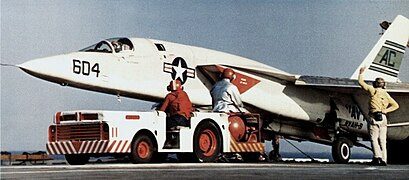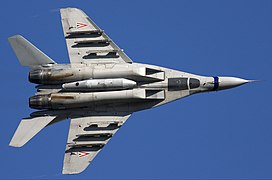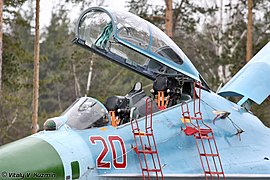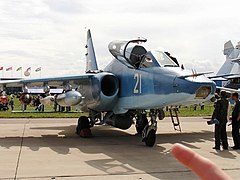
Aircraft canopy

This article needs additional citations for verification. (July 2017) |

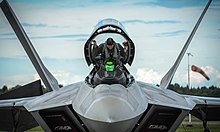
An aircraft canopy is the transparent enclosure over the cockpit of some types of aircraft. An aircraft canopy provides a controlled and sometimes pressurized environment for the aircraft's occupants, and allows for a greater field of view over a traditional flight deck. A canopy's shape is a compromise designed to minimize aerodynamic drag, while maximizing visibility for pilots and other crewmembers.

History


Very early aircraft had no canopies. The pilots were exposed to the wind and weather, although most flying was done in good weather. Through World War I most aircraft had no canopy, although they often had a small windshield to deflect the prop wash and wind from hitting the pilot in the face. In the 1920s and 1930s, the increasing speed and altitude of airplanes necessitated a fully enclosed cockpit and canopies became more common.

Early canopies were made of numerous pieces of flat glass held in position by a frame and muntins. The muntins reduced visibility, which was especially awkward for military aircraft. Also, glass canopies were much heavier than acrylic canopies, which were first introduced shortly before the Second World War. Many aircraft used embedded canopies that restricted visibility for the pilot, some aircraft such as the Curtiss P-40 Warhawk and North American F-107 used rearward visibility panels, this not only intended for peripheral vision but provided ventilation and air circulation for the cockpit. The acrylic bubble canopy was used on aircraft such as the Supermarine Spitfire and Westland Whirlwind, which gave better all-round visibility and reduced weight and other advantages over the embedded canopy. It is still being used on most fighter aircraft.

Ejection seat system

On many high-performance military aircraft, the canopy is an integral part of the ejection seat system. The pilot cannot be ejected from the aircraft until the canopy is no longer in the path of the ejection seat. In most ejection seat equipped aircraft, the canopy is blown upwards and rearwards by explosive charges. The relative wind then blows the canopy away from the ejection path. However, on some aircraft, such as the McDonnell Douglas AV-8B Harrier II, the pilot may be forced to eject when in a hover, or when going too slow for the relative wind to move the canopy out of the path of the ejection seat. In that situation, the pilot could possibly impact the canopy when ejecting. To overcome that possibility, some aircraft have a thin cord of plastic explosive zig-zagging across the canopy over the pilot's head. In the event of an ejection, the explosive cord is activated first, shattering the canopy. Then the ejection seat and pilot is launched through the shattered canopy.

Construction

Most modern acrylic canopies are vacuum formed. A sheet of acrylic is secured to a female mould, then the entire assembly is heated in an oven until the acrylic is pliable. The air is then removed from the mould and the acrylic sheet is drawn into it, forming the shape of the canopy. The acrylic is then trimmed to the appropriate shape and attached to an aluminum or composite frame. Some one-off canopies are made in a similar fashion, but since a mould would be too time-consuming to make, the acrylic is heated and vacuum formed until it approximates the shape the builder is seeking. This type of construction is less precise, however, and each canopy is unique. If multiple canopies will be needed, a mould is almost always used.

Openings
Aircraft canopies have various opening methods:

Sliding (forwards/rearwards)
- Zenair CH 200 (slide forwards)
- Vought F7U Cutlass (slide rearwards)
Sideways
- BAE Hawk
- EADS Mako/HEAT
- General Dynamics F-111 Aardvark (both L/R sides)
Hinged forwards (flip-forward canopy)
Hinged rearwards (flip-rearward canopy)
Variations
Clamshell canopy

A clamshell canopy uses a hinge on the rear of the cockpit, with some examples from the front or side.[1][2] A more unusual example with two components with left and right sections requiring the pilot to enter the cockpit from the rear is found on the Payen PA-22 and Avro Arrow that used this method, the latter example for the use of ejection seats.[3][4]

Stealth canopy
Have Glass is the code name for a series of RCS reduction measures for the F-16 fighter. Its primary aspect is the addition of an indium-tin-oxide layer to the gold tinted cockpit canopy, which is reflective to radar frequencies. An ordinary canopy would let radar signals straight through where they would strike the many edges and corners inside and bounce back strongly to the radar source; the reflective layer dissipates these signals instead. Overall, Have Glass reduces an F-16's RCS (radar-cross section) by 15 percent. The gold tint also reduces glare from the sun to improve visibility for the pilot.[citation needed]

Malcolm Hood
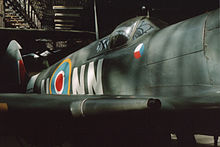
The Malcolm Hood is a type of aircraft canopy originally developed for the Supermarine Spitfire. Its concept proved valuable for other aircraft such as the North American Aviation P-51B & C Mustangs as retrofit items, and standard on later versions of the Vought F4U Corsair, and somewhat emulated on the later models of the Luftwaffe's Focke-Wulf Fw 190 fighter. The canopy was manufactured by the British company R Malcolm & Co which gave its name. Instead of taking a straight line between the canopy frames, the hood was bulged outward. This gave the pilot a better view to the rear.

A bulged hood replaced the Vought Corsair's "birdcage" framed canopy from the 689th production F4U-1 to provide better all-round field of view.[5]

False canopy

In the 1970s, US aviation artist Keith Ferris invented a false canopy to paint on the underside of military aircraft, directly underneath the front of the plane, the purpose of deception which was to camouflage the direction the aircraft is heading. This ruse was inspired by animals and fishes that have similar markings on the head and tail, so they can confuse other creatures. Pilots remain skeptical of this feature, asserting that if the enemy is close enough to see the marking, they are too close to be fooled by it.[citation needed]

Canada was the first operational user, painting CF-18s with a canopy on the bottom of the plane.

Synthetic canopy
A type of canopy used as part of a synthetic cockpit where the pilot would not have direct sight of the outside world, but through an array of cameras. The British Aerospace P.125 was to use the have not glass cockpit arrangement that would increase stealth characteristics and would block out the potential soviet threat of dazzling laser weapons.

Gallery
-
Hawker Hurricane with framed canopy slid to rear
-
North American A-5 Vigilante with embedded canopy
-
A MiG-29 with painted "false canopy" underneath the front of the plane
-
Examples of "false canopy" in attack aircraft
-
Elongated double canopy is not limited to training aircraft
-
The low drag canopy of an Extra 300 aerobatic light aircraft.
-
F-16 ejection during an air show showing the canopy blown away from the aircraft by explosive charges
-
The raised canopy of a Su-25
See also
References
- ^ "Aircraft cockpit canopy". Retrieved November 11, 2023.
- ^ "clamshell". Retrieved November 11, 2023 – via The Free Dictionary.
- ^ Canada, Government of Canada National Research Council (November 11, 2023). "CF-105. Proposed program of Sparrow and Canopy tests at Cornell and Sparrow jettisoning in Ottawa - NRC Digital Repository". nrc-digital-repository.canada.ca. Retrieved November 11, 2023.
- ^ "Avro's Broken Arrow - Aircraft InFormation.info". www.aircraftinformation.info. Retrieved November 11, 2023.
- ^ Geobel, Greg (August 1, 2009). "The Vought F4U Corsair". www.vectorsite.net. Archived from the original on August 15, 2009. Retrieved May 6, 2018.
External links
See what we do next...
OR
By submitting your email or phone number, you're giving mschf permission to send you email and/or recurring marketing texts. Data rates may apply. Text stop to cancel, help for help.
Success: You're subscribed now !


